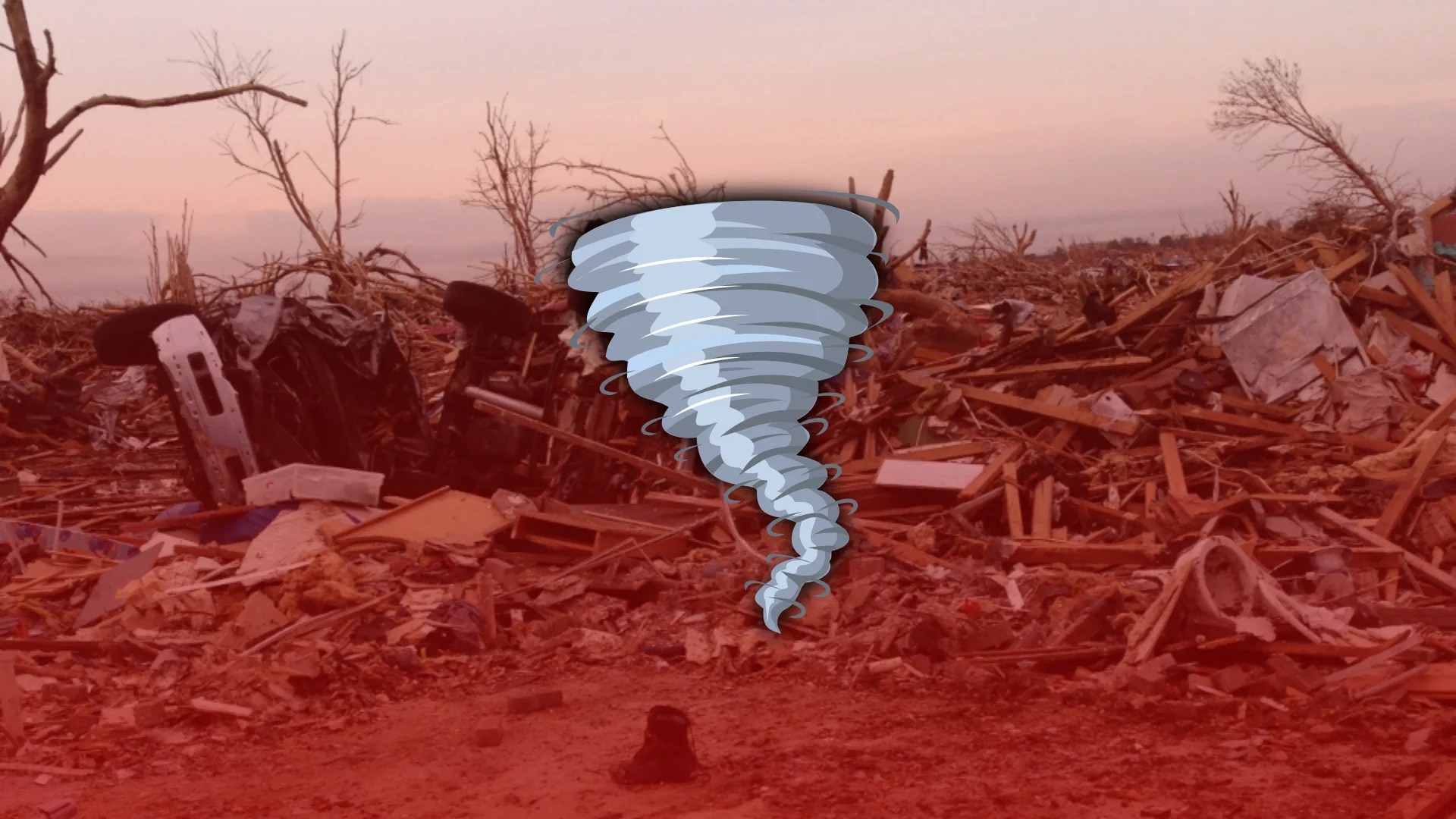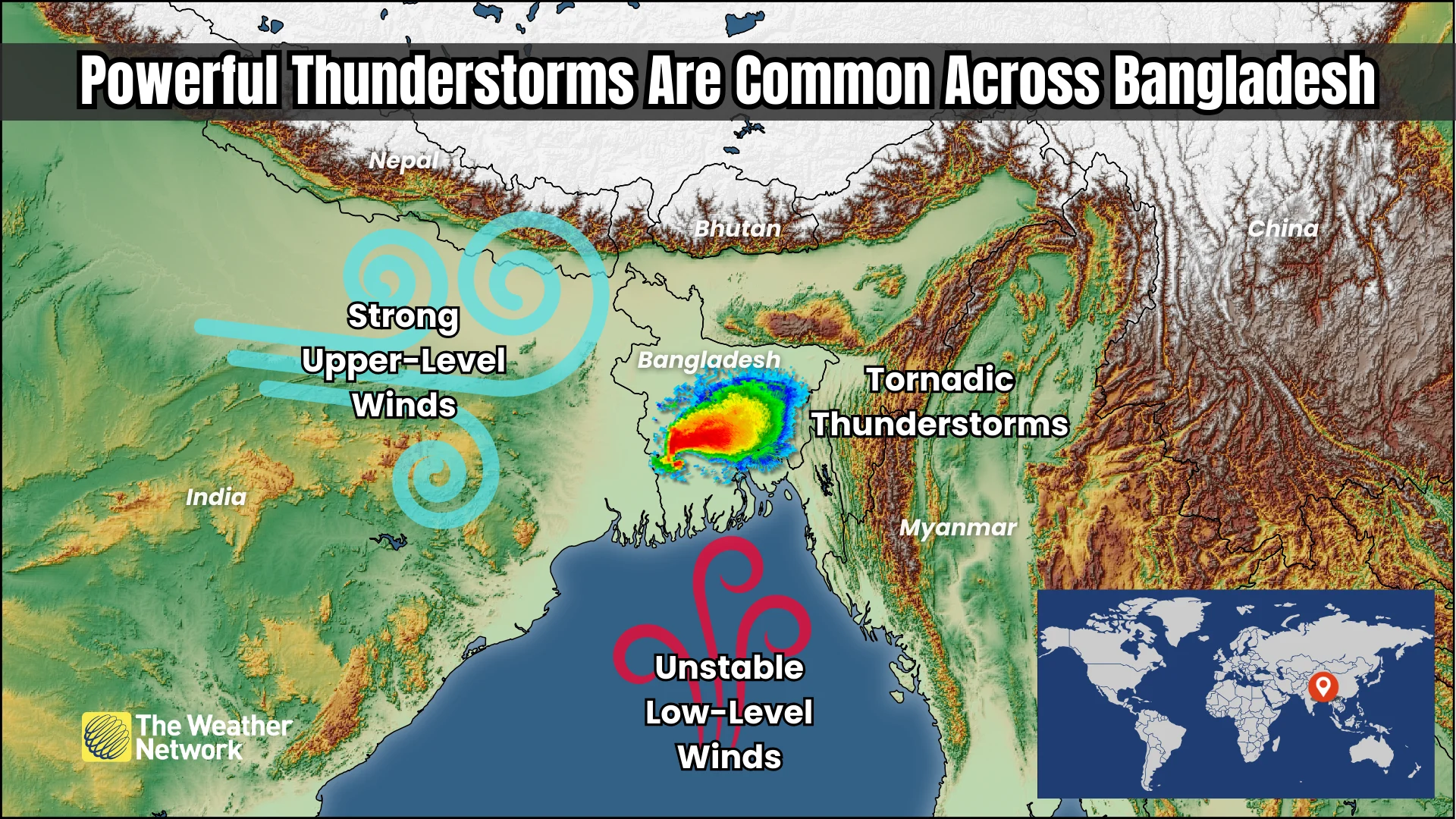
These were seven of history’s most violent tornadoes
From Canada to Bangladesh, these were some of the most intense tornadoes ever recorded
Tornadoes are a frightening threat during severe thunderstorms. Thankfully, only a tiny percentage of thunderstorms ever produce a tornado, and most of those twisters are relatively weak and short-lived.
Some tornadoes, though, grow into tragic events that exhibit nature’s raw power. And it’s a hazard that’s not just confined to Tornado Alley.
Here’s a look at seven of the deadliest and most violent tornadoes ever recorded.
DON'T MISS: Scud clouds are scary tornado lookalikes – how to tell them apart
The world’s deadliest tornado hit Bangladesh
For all the tornadoes that touch down across Canada and the U.S., the world’s deadliest twister actually unfolded halfway around the globe.
Bangladesh is a flat, low-lying, and densely populated country along the Bay of Bengal in southern Asia. These factors combine to leave the country prone to devastating storms on a regular basis.

Violent supercell thunderstorms are common in Bangladesh during the spring months as robust weather systems pass through the region. These storms can spawn intense tornadoes, which are particularly dangerous given the country’s dense population.
A destructive tornado that struck the Manikganj District on April 26, 1989, reportedly killed as many as 1,300 people—making it the world’s deadliest tornado ever recorded.
Canada’s deadliest tornado struck Regina
June 30, 1912, was a warm and humid summer day on the Prairies. Unstable air combined with wind shear aloft created severe thunderstorms that flourished over Saskatchewan’s flat landscape.
Residents of Regina sadly had no warning before a strong tornado swept through the city. The storm claimed the lives of 28 people that day, cementing its infamous distinction as the deadliest tornado in Canadian history.
The deadliest U.S. tornado hit three states
The vast majority of the world’s tornadoes touch down in the United States. Unsurprisingly, these twisters used to claim high death tolls before the era of modern technology.
MUST SEE: The frightening reason violent EF-5 tornadoes are so rare
Favourable conditions on March 18, 1925, allowed a supercell to produce a very intense and long-tracked tornado known today as the Tri-State Tornado. This storm, which may have stayed on the ground for as long as 350 km, killed nearly 700 people as it travelled through Missouri, Illinois, and Indiana.
WATCH: Don’t fall victim to these dangerous tornado myths
Longest tornado track spanned 266 km
Experts today aren’t sure if the Tri-State Tornado really stayed on the ground for that entire 350 km path. It’s common for long-lived tornadoes to lift off the ground before touching down again nearby.

Western Kentucky holds the dubious distinction of witnessing the longest confirmed tornado path ever observed. A powerful storm on Dec. 10, 2021, spawned a twister that remained on the ground for 266.7 km (165.7 mi.). This high-end EF-4 storm devastated the town of Mayfield.
Oklahoma also saw the strongest measured wind gust
Oklahomans live in the heart of Tornado Alley. Accustomed to rambunctious storms every spring, the twisters that strike the Sooner State are serious business.
RELATED: Stuck in your car during a tornado? Here’s what you should do
The strongest tornado ever measured occurred near the state capital of Oklahoma City. A scale-topping F5 twister tore through the Oklahoma City suburbs on May 3, 1999, as meteorologists tracked the storm using a mobile Doppler radar unit.
Data from the dish revealed that winds just above the surface peaked at more than 500 km/h, making it the strongest wind ever recorded within a tornado.
Oklahoma saw the biggest tornado ever observed
While it may not have had the strongest winds ever observed, no tornado in recorded history has ever surpassed the size of the storm that occurred just outside of El Reno, Oklahoma, on the afternoon of May 31, 2013.

The tornado rapidly grew to 4.2 km (2.6 mi.) in size, making it the widest twister ever observed. Its growth happened so quickly that its violent winds tragically killed several storm chasers in the area.
Joplin’s tornado stands alone in modern history
Most large tornadoes churn through open spaces and miss major population centres. But one historic storm on May 22, 2011, struck the heart of the city of Joplin, Missouri, with devastating consequences.
158 people died in the EF-5 tornado after it tore through the southern half of Joplin, levelling entire neighbourhoods and reducing large box stores to piles of rubble. This remains the highest U.S. death toll since advanced warnings began in the mid-1900s.
Some truly nightmarish damage came to light in the wake of the storm. Heavy concrete parking stops were ripped from the ground as the tornado passed overhead. Steel manhole covers were blown away and never found. A multi-storey hospital was condemned and eventually demolished after the 320+ km/h winds compromised the entire structure's integrity.
